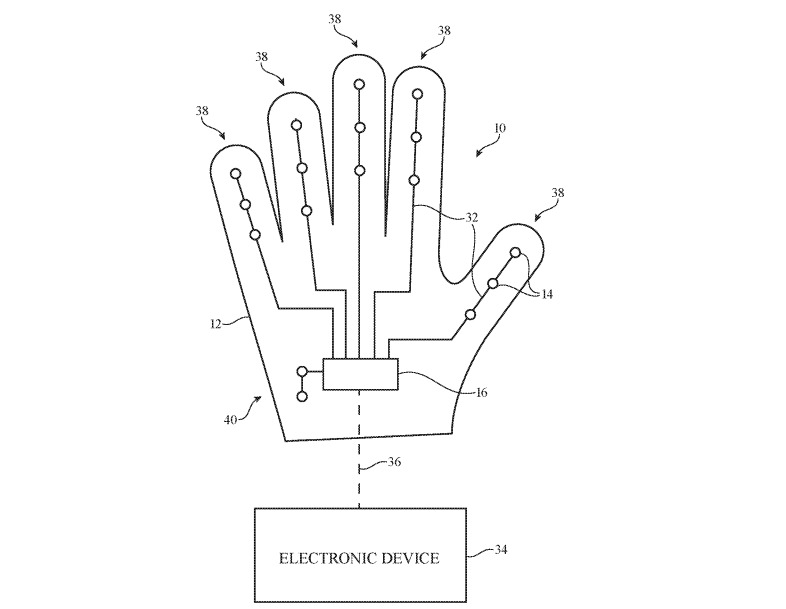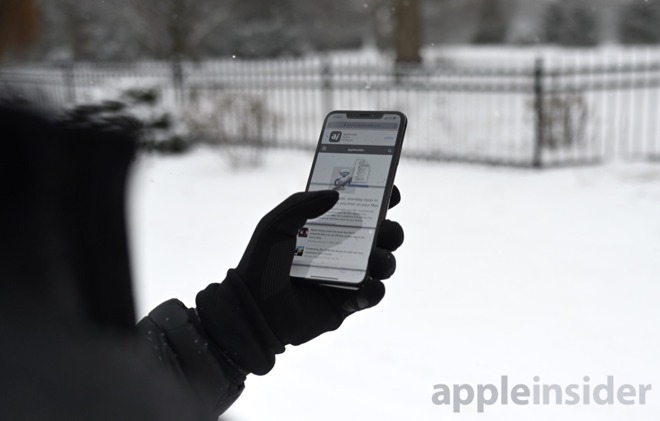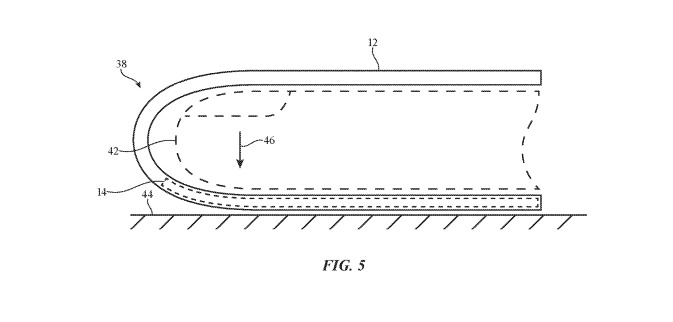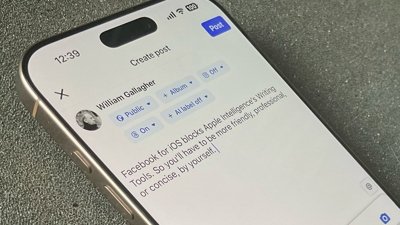Apple wants people to be able to interact with devices using gloves and other items of clothing, by taking advantage of conductive strands in the fabric to give the wearable garments a force-sensing capability that could be used by an iPhone or another connected device.
Keyboards, mice, and touchscreens are some of the most common ways users interact with modern computer systems. Such methods of interactivity are useful, but Apple is considering alternate ways that users can issue commands or control an application in a tactile fashion, without relying on a dedicated touchscreen or other peripherals.
Published on Thursday by the US Patent and Trademark Office, Apple's patent application for "Fabric-based devices with force sensing" explains how a garment like a glove could include circuitry in its construction to provide some level of force sensing capabilities. By housing the force-sensing elements, this could enable for a glove to monitor when the user touches a surface, how hard the press could be, and how many fingers are touching, allowing for different commands to be issued.
According to the application, the garment would include conductive strands within the material used in its construction, with the strands acting as signal paths to transfer electrical pulses from one area to another. The conductive strands are intertwined with normal threads, effectively making them invisible to the user, and without an obvious connecting wire between parts.
The conductive strands are put into contact with force sensing circuitry, which could include force sensor elements made from electrodes on a compressible substrate, like an elastomer polymer. Signals from the circuitry is dispatched by the conductive threads to other components, including a wireless element to transmit commands or other data to a host device.
 An example of a glove with multiple embedded force sensors in the fingers, capable of determining how an item is gripped.
An example of a glove with multiple embedded force sensors in the fingers, capable of determining how an item is gripped. Using stiffeners, the compressible substrate could have electrodes on both sides of a surface, allowing them to be used independently. In the case of something like a glove, an internally-facing surface of the substrate could be used to confirm a finger is touching the glove itself with a level of force, while the externally-facing surface can monitor for contact with other world elements.
As the sensing circuitry would be used in clothing and other flexible items, Apple suggests the use of openings around the electrodes for each force sensor element to facilitate movement. Furthermore, the conductive signal paths would have to be constructed to take into account compression and stretching, and to be made in structures "that resist cracking when flexed," such as in mesh surfaces with serpentine line segments.
The patent application as a whole is effectively a slightly different angle of approach than an identically-named patent Apple was granted on January 15. Though quite similar, the new patent application pares down the number of claims, but largely follows the same core ideas.
Apple does file numerous patent applications on a weekly basis, but while the publication of the concepts may not guarantee their existence in a future Apple product or service, it does at least show areas of interest to the iPhone maker.
The patent application offers up the possibility of gloves for VR or AR purposes, rather than using held controllers, but could also be used for accessories for existing devices like an Apple Watch, adding more functionality without resorting to an additional element added to the original device's design.
For the Apple Watch, Apple has looked into producing bands that light up, add a camera, and other indications. A force sensing fabric could be used to add more health-related functionality to the Apple Watch via the band, or wirelessly via a hat that is also fitted with other sensors.
Embedded conductive threads have previously appeared in another patent application, again for the creation of fabric with a built-in functional circuit. Apple has also considered combining force-sensing fabrics with flexible displays and >deformable elastomeric substrates to produce smart clothing, along with flexible OLEDs.
 Malcolm Owen
Malcolm Owen


-m.jpg)






 William Gallagher
William Gallagher

 Andrew O'Hara
Andrew O'Hara
 Wesley Hilliard
Wesley Hilliard


 Marko Zivkovic
Marko Zivkovic





-m.jpg)




2 Comments
iGlove, part of iFashion. Another revenue generator of the Apple ecosystem?
Can someone explain how this differs from current touch gloves?